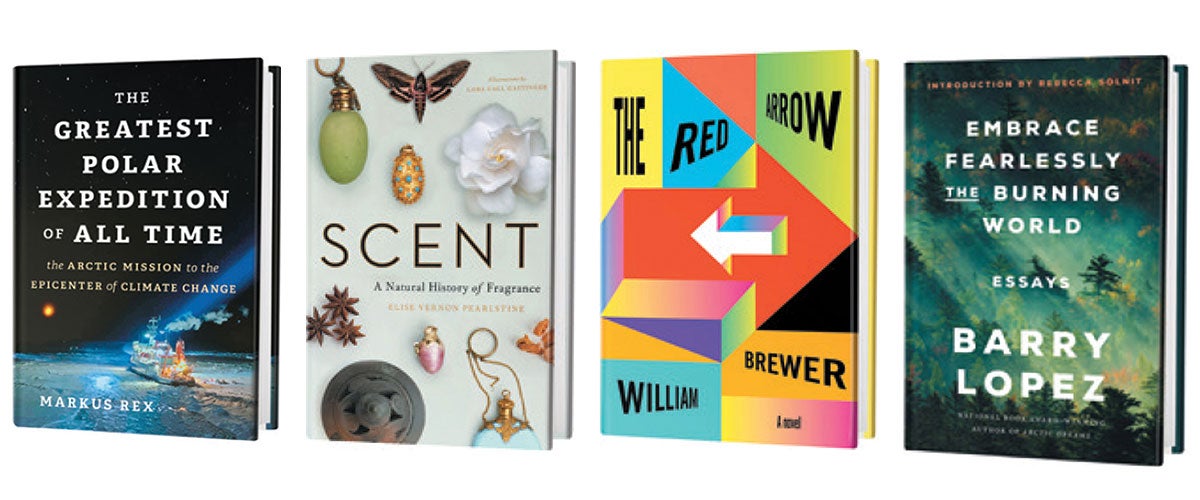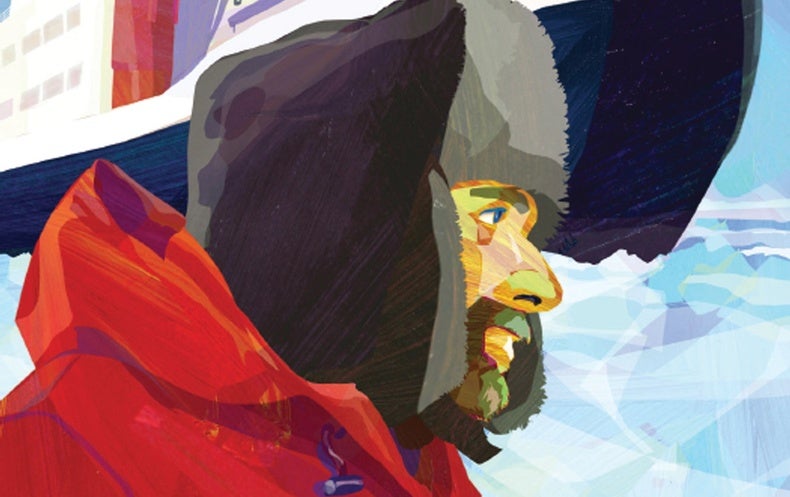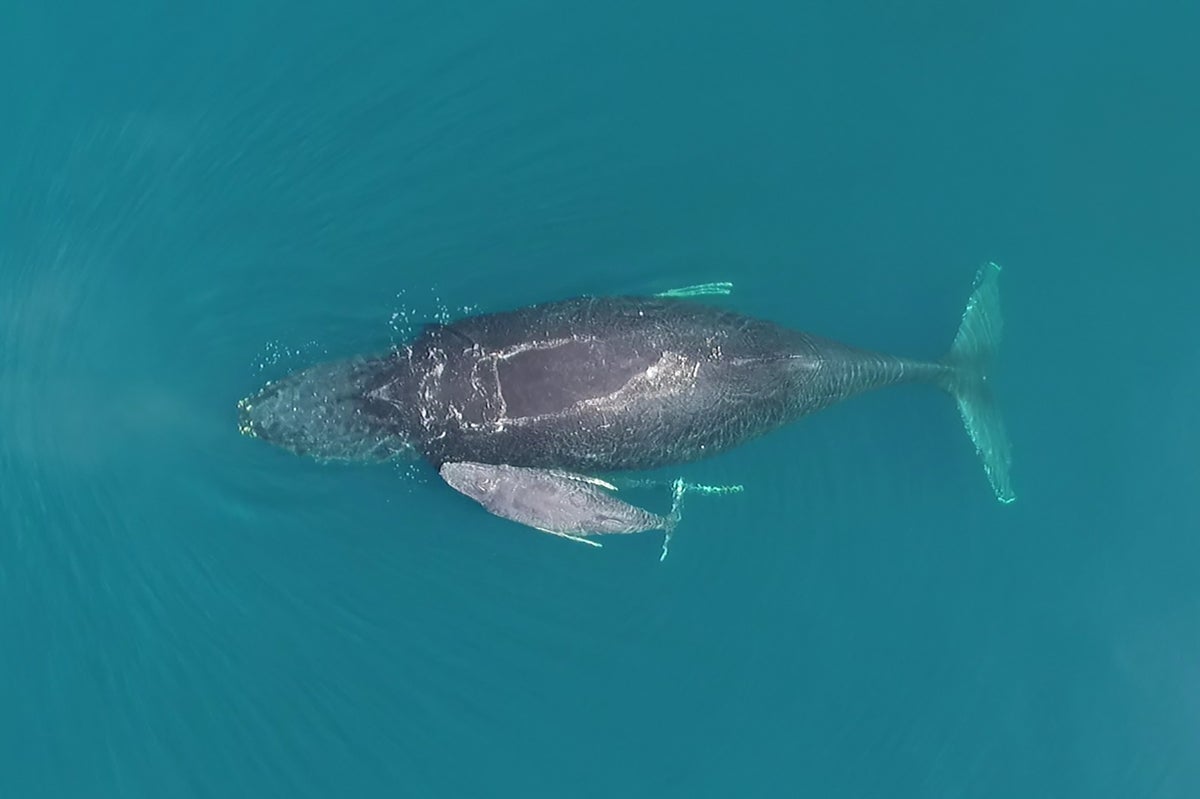NONFICTION
The Greatest Polar Expedition of All Time: The Arctic Mission to the Epicenter of Climate Change
by Markus Rex, translated by Sarah Pybus
Greystone Books, 2022 ($28.95)
On October 4, 2019, the Polarstern, a German icebreaker the length of a football field, sidled up to a thick ice floe above the Arctic Circle and turned off its engines. Soon the sun would set for months. The remaining open ocean around the boat would ice over, and three million square miles of liquid would turn solid in the span of a few short weeks. Were you to have peered down on the ship then, it would have looked like an almond lodged in a bar of white chocolate the size of Australia.
Dig into the fine print of our most complex global climate models, and you’ll discover that we have next to no observational data from the high Arctic in winter. We know the region is warming faster than any other place on the planet, but what that means for future weather patterns, sea level, storm intensity, biodiversity (the list goes on and on) remains achingly unclear. There is growing concern, however, that estimates of just how bad it could get, and when, are too conservative. Enter MOSAiC or, as Markus Rex, the mission’s leader, calls it (and, no, his tongue is not planted firmly in his cheek), “The Greatest Polar Expedition of All Time.”
On the surface, the plan behind MOSAiC is simple enough: allow the Transpolar Drift, a kind of conveyor belt that moves ice across the ice cap, to carry the Polarstern straight through the center of the Arctic during the long polar night. By getting “trapped” in the floe, those onboard will be able to assemble a unique data set. They will record during a single calendar year what goes on in the ocean, in the air, and on the ice (where those two systems meet), creating a holistic profile of the processes that drive the birth and death of sea ice. From this information, scientists will “create a more robust model of the Arctic climate system,” Rex writes.
If all of this is starting to sound a bit wonky, that’s because The Greatest Polar Expedition of All Time is written by an atmospheric scientist rather than a nature essayist like Barry Lopez or a climate novelist like Ashley Shelby, whose 2017 book South Pole Station explores the way community is forged (and tested) by isolation and ice. There are no characters (beyond the author) and no conversations between those people he resides alongside. The book reads more like a ship log than it does a piece of literary reportage. If you’ve ever wondered what it is like to gather the information on which the IPCC reports are built, this is your front-row seat. The series of dated entries is dense with the particular drama of conducting state-of-the-art science in a place where satellites don’t reach and there’s nowhere to refuel (be it with candy or combustibles) when the supplies run low.
As someone who has lived on a research icebreaker (and is currently at work on a book about the experience), I took great pleasure in reading the details of day-to-day activities. On the Polarstern, even the most mundane tasks require planning, patience and ingenuity to execute. How does one way-find on a giant slab of ice that is drifting steadily through complete darkness? Invent a coordinate system where the ship’s bow—the single most important reference point in this Seussian landscape—serves as the axis around which everything else is oriented. Want to leave the boat? Bring an armed polar-bear guard, an emergency survival kit and at least two backup headlamps. Searching for souvenirs? Make them yourself, by suspending oversized ice crystals in hardened acrylic lifted from the machine room.
The expedition has five phases, with crew and scientists cycling on and off the boat, making its leader into the one reliable human through line. Rex’s voice is endearing and antiquated in turns. There is no bluster, no boasting, no chest puffing here, just a genuinely enthusiastic scientist overseeing a season of fieldwork that has taken a lifetime to prepare. Yet in the context of writing a climate book for a wide audience (versus an academic paper slated for peer review), his passion for data collection blinkers him to how polar narratives, including his own, uphold many of the historic power imbalances that have both created the climate crisis and impeded our ability to act.
Omission plagues the polar canon, and this book is no exception. Women rarely appear, let alone speak; Indigenous peoples serve as set pieces as opposed to residents with invaluable knowledge that interlopers lack; and those whose maintenance work makes these complex logistical endeavors possible—in the form of cooking, cleaning and caring for the ship and its expedition members—lurk in the subtext, offstage.
In the century since the “Heroic Age of Polar Exploration,” Earth’s operating system has changed in myriad and troubling ways, as a direct result of the imperialist logic that drove those men poleward in search of fame and fortune. Yet the stories carried back from the places where these changes are most profoundly felt hasn’t evolved at the same stunning clip. The tales we often celebrate showcase bearded gentlemen with lofty educations (in this case, a doctorate from the Freie Universität Berlin) boldly going where no one has gone before to achieve the seemingly unthinkable.
Blessedly, there are exceptions: Bathsheba Demuth’s Floating Coast, which recasts the Arctic as an inhabited region of ecological plenitude; or Joan Naviyuk Kane’s Hyperboreal, a lyrical investigation of loss and continuity on King Island, the author’s ancestral home, from which her family was forcibly removed by the Bureau of Indian Affairs; or Mat Johnson’s satirical novel Pym, a wildly subversive investigation of the racial ideologies that shape polar storytelling.
The most surprising moment in The Greatest Polar Expedition of All Time comes about two thirds of the way through, when the pandemic threatens to end the mission early. MOSAiC is an inherently international collaboration, with 20 nations participating, but as borders close and the icebreakers that were supposed to support the ship are sent home, the Polarstern just keeps drifting. All the meticulously laid plans—for refueling, personnel changes, refilling of the refrigerator stores—must be reimagined and fast.
The only vessels that are eventually permitted to assist hail from the same country as the ship itself, suggesting in times of crisis (a marker with which we are certain to become more familiar in the future) global collaboration will become increasingly difficult to summon rather than easier. At some level this is something we already know to be true, having all lived through the early pandemic ourselves. But it is still unsettling to hear that of the more than 80 different institutions involved in MOSAiC, the German Federal Ministry of Education and Research is the only one able to provide the aid necessary to save this unprecedented mission.
Once the obstacles posed by the pandemic have been overcome, life on the Polarstern returns to “normal” rather quickly. Turbulence sensors are deployed, ice cores extracted, seismic measurements collected. Then the ice Rex and his team have lived alongside for nearly a year melts, and everyone goes home. Almost as if nothing has changed at all. —Elizabeth Rush
Elizabeth Rush is author of Rising: Dispatches from the New American Shore (Milkweed, 2018), which was a finalist for the Pulitzer Prize in General Nonfiction. She teaches creative nonfiction at Brown University.
IN BRIEF
Scent: A Natural History of Fragrance
by Elise Vernon Pearlstine, illustrated by Lara Call Gastinger
Yale University Press, 2022 ($28)
Reading Scent feels like going on a meandering nature walk through the history and science of fragrance, guided by a wildlife biologist turned natural perfumer. Within a single sentence, author Elise Vernon Pearlstine writes that incense “rises to the heavens to carry messages to the gods” and “pretty much always involves sesquiterpenes.” Conjuring sights and sounds from text is difficult enough, but Scent delivers on its title in a way that Smell-O-Vision merely wishes it could do. Despite the occasional pitfall (describing multiple fragrant subjects as “mysterious” and “exotic”), the book is an evocative journey that awakens one’s curiosity to an oft-forgotten sense. —Dana Dunham
The Red Arrow: A Novel
by William Brewer
Knopf, 2022 ($27)
The Red Arrow is somehow both a harrowing depiction of depression and a laugh-out-loud mystery about physics, psychedelics and the publishing industry. It opens on a Frecciarossa (“red arrow”) train in Italy, where an unnamed American writer is searching for a missing physicist whose memoir he is ghostwriting to get out of debt. After years of fighting suicidal depression that he calls “the Mist,” an experimental treatment with psilocybin mushrooms has set his life on an entirely new course—as long as he can find who he is looking for. At turns delightful and demanding, William Brewer’s debut novel is a serpentine ride that culminates in a moving encounter between art and science. —Adam Morgan
Embrace Fearlessly the Burning World
by Barry Lopez
Random House, 2022 ($28)
This posthumously published collection of essays by nature writer Barry Lopez reveals an exceptional life and mind. Organized thematically, the essays center on Lopez’s abiding love for the environment and his extraordinarily fine-tuned sense of place. He writes deeply nuanced reflections on locations as disparate as Antarctica and California’s San Fernando Valley, interlaced with gentle meditations on art, travel, friendship, family and searing personal trauma. While certainly a testament to his legacy and an ephemeral reprieve from his death in 2020, this book is more than a memorial: it offers a clear-eyed praxis of hope in what Lopez calls this “Era of Emergencies.” —Dana Dunham



























































